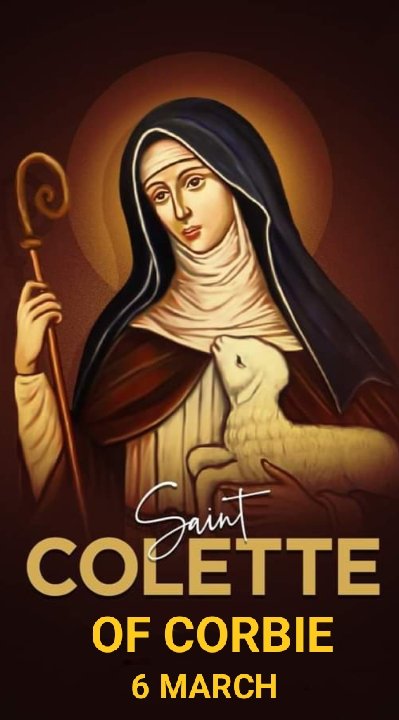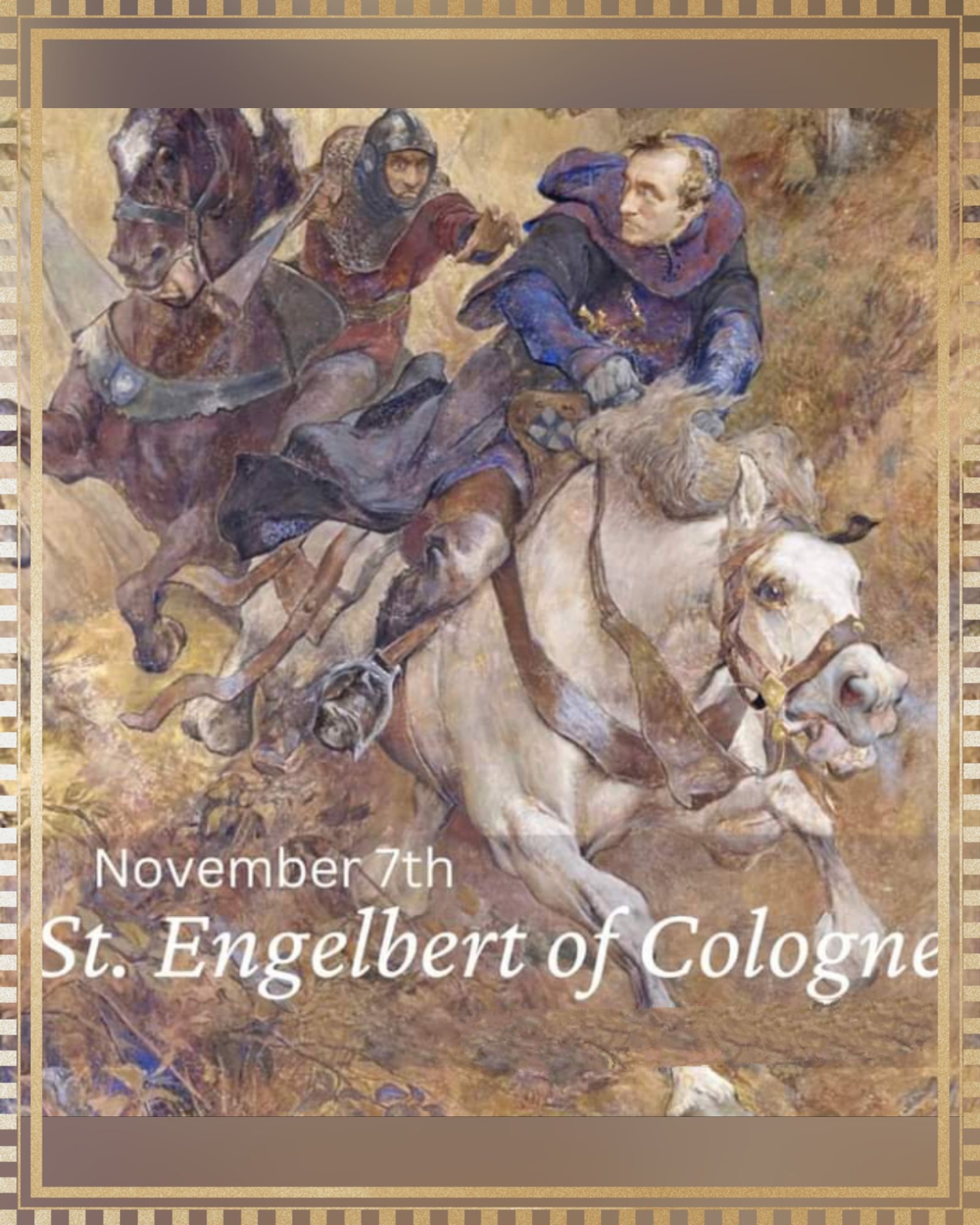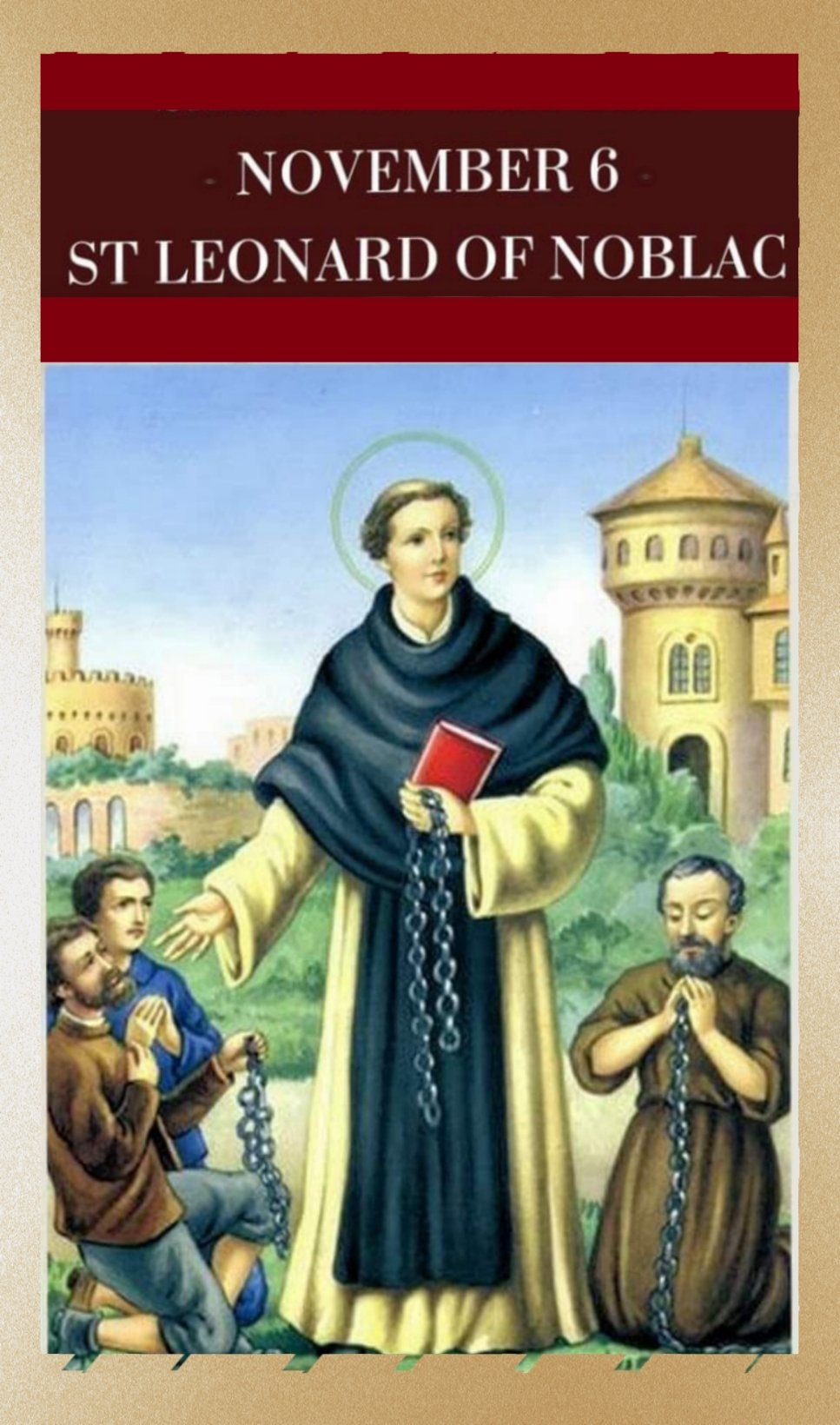
FEAST OF SAINT JOHN JOSEPH OF THE CROSS – 5th MARCH
March 8, 2023
FEAST OF SAINTS PERPETUA AND FELICITY – 7th MARCH
March 8, 2023FEAST OF SAINT COLETTE OF CORBIE
FEAST DAY – 6th MARCH
Colette of Corbie, (13 January 1381 – 6 March 1447) was a French abbess and the foundress of the Colettine Poor Clares, a reform branch of the Order of Saint Clare, better known as the Poor Clares. She is honored as a saint in the Catholic Church. Due to a number of miraculous events claimed during her life, she is venerated as the patron saint of women seeking to conceive, expectant mothers, and sick children.
She was born Nicole Boellet (or Boylet) in the village of Corbie, in the Picardy region of France, on 13 January 1381 to Robert Boellet, a poor carpenter at the noted Benedictine Abbey of Corbie, and to his wife, Marguerite. Out of gratitude, they named the baby after the saint to whom they credited the miracle of her birth. She was a child of grace, an answer to her mother’s incessant prayers, for the latter was already 60, and had been childless up to that time.
The little girl took great pleasure in prayer, in compassion for the poor, and in rigorous mortification, making of her soul and of her tender body a sacrifice to God. Up to her 14th year St. Colette de Corbie remained unusually small in stature; this was a great grief for her father. St. Colette begged God to console her father in this matter, and then she began to grow very rapidly to normal height.
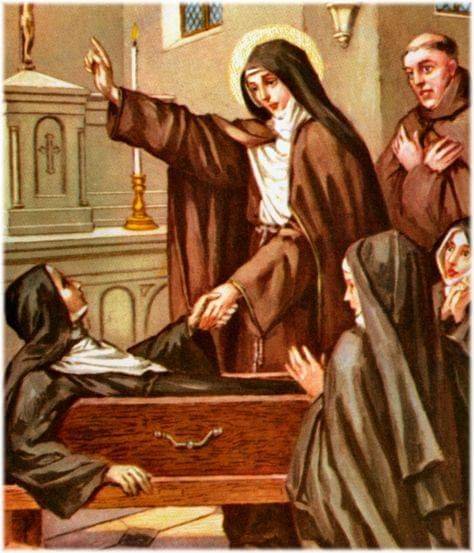
On the other hand, she asked God to deprive her of the rare beauty she possessed, which she believed might be the occasion of danger to herself and others; that request, too, was granted. After her parents died in 1399, Colette joined the Beguines but found their manner of life unchallenging. Joining a Benedictine order as a lay sister, most likely to avoid an arranged marriage, she again became dissatisfied.
In September 1402, Colette received the habit of the Third Order of St. Francis and became a hermit under the direction of the Abbot of Corbie, living near the abbey church. After four years of following this ascetic way of life (1402–1406), through several dreams and visions, she came to believe that she was being called to reform the Franciscan Second Order and to return it to its original Franciscan ideals of absolute poverty and austerity.
There she expected to spend the remainder of her life as an anchoress.
She had embraced the rule of the Third Order of St. Francis, in accordance with which she endeavored to live in perfect poverty, severe mortification, and constant prayer in order to become daily more and more like the Seraphic Father. She received many consolations from heaven, but on the other hand she also experienced severe temptations and even corporal abuse from the spirits of darkness. Almighty God had destined St. Colette for something extraordinary. He excited in her the desire to re-introduce the strict observance of the rule of St. Clare, which many convents of Poor Clares then observed in a modified form.
The humble virgin recoiled at the thought, which she tried to persuade herself was an illusion of the proud spirit of darkness. But the inspiration returned again and again, and when St. Colette de Corbie continued to resist it, she was struck dumb and later on blind, until she finally resigned herself to the will of God, like Saul before Damascus. “Lord,” St. Colette de Corbie sobbed in her heart, “what wilt Thou have me do? I am ready to do anything Thou desirest of me.”
At once her speech and her sight were restored. The Lord sent her a special director under whose guidance she was to perform extraordinary things. And so, after spending four years in her retreat, and with the authority and the blessing of the pope, she established one convent of Poor Clares after another, so that the number reached 17 during her lifetime. After her death similar foundations were established in countries other than France, in which the primitive rule of St. Clare began to flourish anew.
St. Colette de Corbie endured untold hardships in fulfilling the task assigned to her, but heaven supported her even in visible ways; numerous miracles, including the raising to life of several dead persons, occurred in answer to her prayers and in confirmation of her work. So, the great foundress remained ever humble, regarding everything as the work of God, who often chooses the lowliest of people as His instruments.
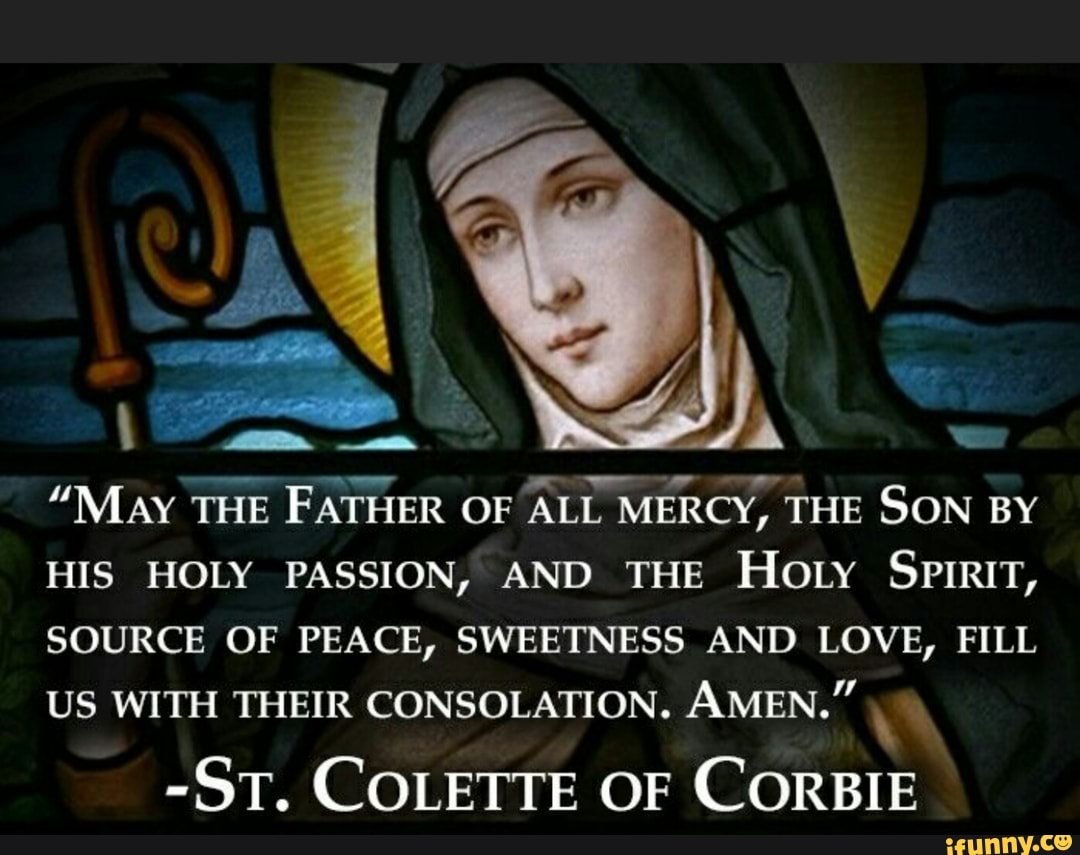
On this foundation of humility she endeavored to foster in her convents the spirit of prayer and simplicity of heart. She placed great value on the recitation of the Divine Office in choir, undoubtedly in remembrance of the practice existing in her native town, and infused this esteem into her fellow sisters. She was also filled with zeal for the salvation of souls, and once in a vision she saw souls falling into hell more swiftly than the snowflakes in a winter’s storm.
St. Colette reformed the Order of Poor Clare’s and founded a branch of the Order that is still known as the Colettines. St. Colette had a special devotion to St. John the Apostle, who appeared to her on one occasion to place a miraculous ring on her finger. As he did so, he said: “by my own right and on behalf of the sovereign King and Prince of virginity and chastity.” This ring was visible to all, and was a beautiful and very precious ring of gold.
St. Colette had a great desire for a relic of the True Cross. One day when she was contemplating Our Lord’s suffering in the midst of her community, she was drawn into an ecstasy. When her contemplation was over, she realized she was holding a small gold crucifix that had not been there before. It contained a small relic of the True Cross. Years later, upon preparing for her death, she gave away her few possessions. The abbess of Besancon received this cross as St. Colette told her: “Keep it and treasure it, for it is from Heaven.”
In October 1406, she turned to the Antipope Benedict XIII of Avignon who was recognized in France as the rightful pope. Benedict received her in Nice, in southern France, and allowed her to transfer to the Order of Poor Clares. Additionally, he empowered her through several papal bulls, issued between 1406 and 1412, to found new monasteries and to complete the reform of the Order.
With the approval of the Countess of Geneva and the aid of the Franciscan itinerant preacher, Henry de Beaume (her confessor and spiritual director), Colette began her work at Beaune, in the Diocese of Geneva. She remained there only a short time. In 1410, she opened her first monastery at Besançon, in an almost-abandoned house of Urbanist Poor Clares. From there, her reform spread to Auxonne (1412), to Poligny (1415), to Ghent (1412), to Heidelberg (1444), to Amiens, to Pont-à-Mousson in Lorraine, and to other communities of Poor Clares.
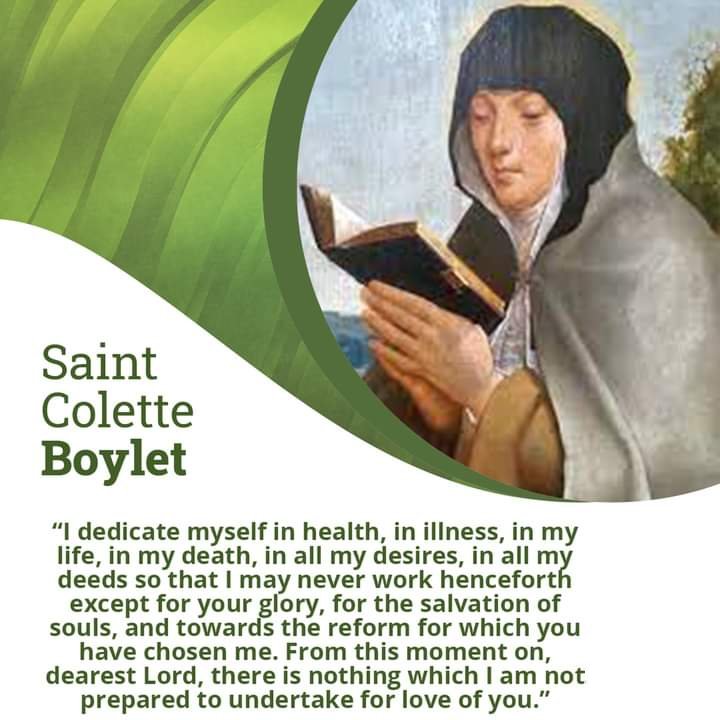
During her lifetime 18 monasteries of her reform were founded. For the monasteries which followed her reform, she prescribed extreme poverty, going barefoot, and the observance of perpetual fasting and abstinence. After laboring for 40 years, she was to receive her eternal reward. She died in her convent at Ghent on March 6, 1447. At the moment of her departure from this world she appeared to several sisters in different convents. Colette knew exactly when and where she was going to die. She died in one of her convents in Ghent, Flanders, in 1447. She was sixty-seven.
Many miracles are credited to her. While traveling to Nice to meet Pope Benedict, Colette stayed at the home of a friend. His wife was in labor at that time with their third child, and was having major difficulties in the childbirth. Colette immediately began to pray for her. The mother gave birth and survived the ordeal, crediting Colette’s prayers for this. The child born, a girl named Petronilla, later entered a monastery founded by Colette. She would become Colette’s secretary and biographer.
According to legend, a local peasant woman gave birth to a stillborn child. Out of fear for the child’s soul, the father took the baby to the local parish priest for baptism, but the priest refused to baptize the dead body. When the man became insistent, the priest told him to go to the nuns. When he arrived at the monastery, Mother Colette was made aware of his situation by the portress.
Her response was to take off the veil given to her by the Pope, when he gave her the habit of the Second Order, and to have the father wrap the child’s body in it and for him to return to the priest. When he arrived at the parish church with his small bundle, the child was conscious and crying. The priest immediately baptized the baby.
Colette was beatified 23 January, 1740, and canonized 24 May, 1807. She was not only a woman of sincere piety, but also intelligent and energetic, and exercised a remarkable moral power over all her associates. She was very austere and mortified in her life, for which God rewarded her by supernatural favours and the gift of miracles. For the convents reformed by her she prescribed extreme poverty, to go barefooted, and the observance of perpetual fast and abstinence.
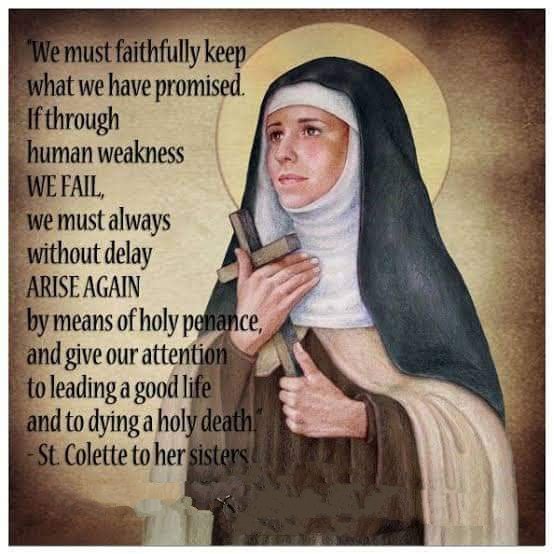
PRAYER
Saint Colette, your parents were very grateful to God for the gift of you, their daughter. They raised you to be a holy servant of God, Who had answered their prayers and blessed them so richly.
Pray for us, that we may always seek to be a holy servant of God, as you were. Pray that we may have the faith to ask God for that which we need and desire in our life. Through Jesus our Lord. Amen
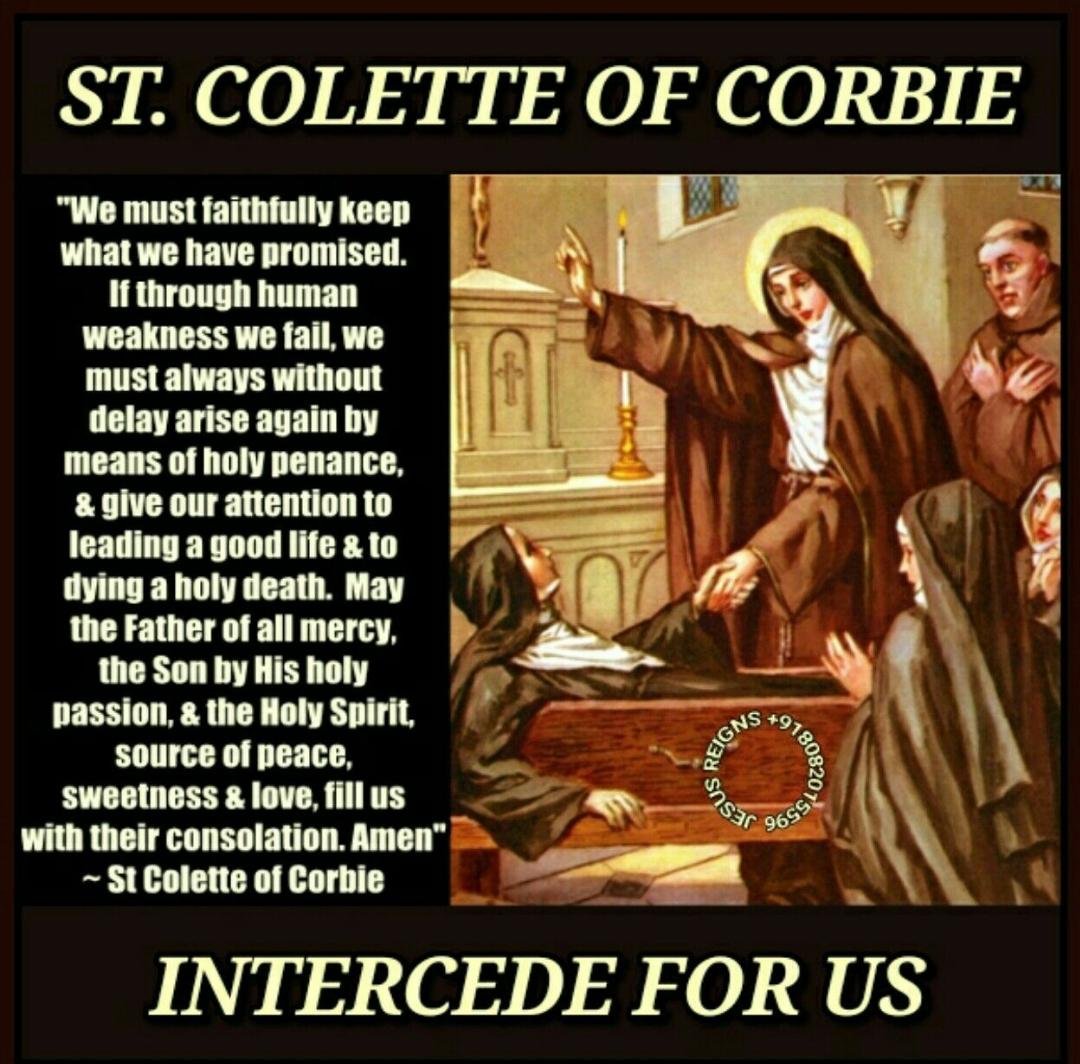
St. Colette, pray for us!

